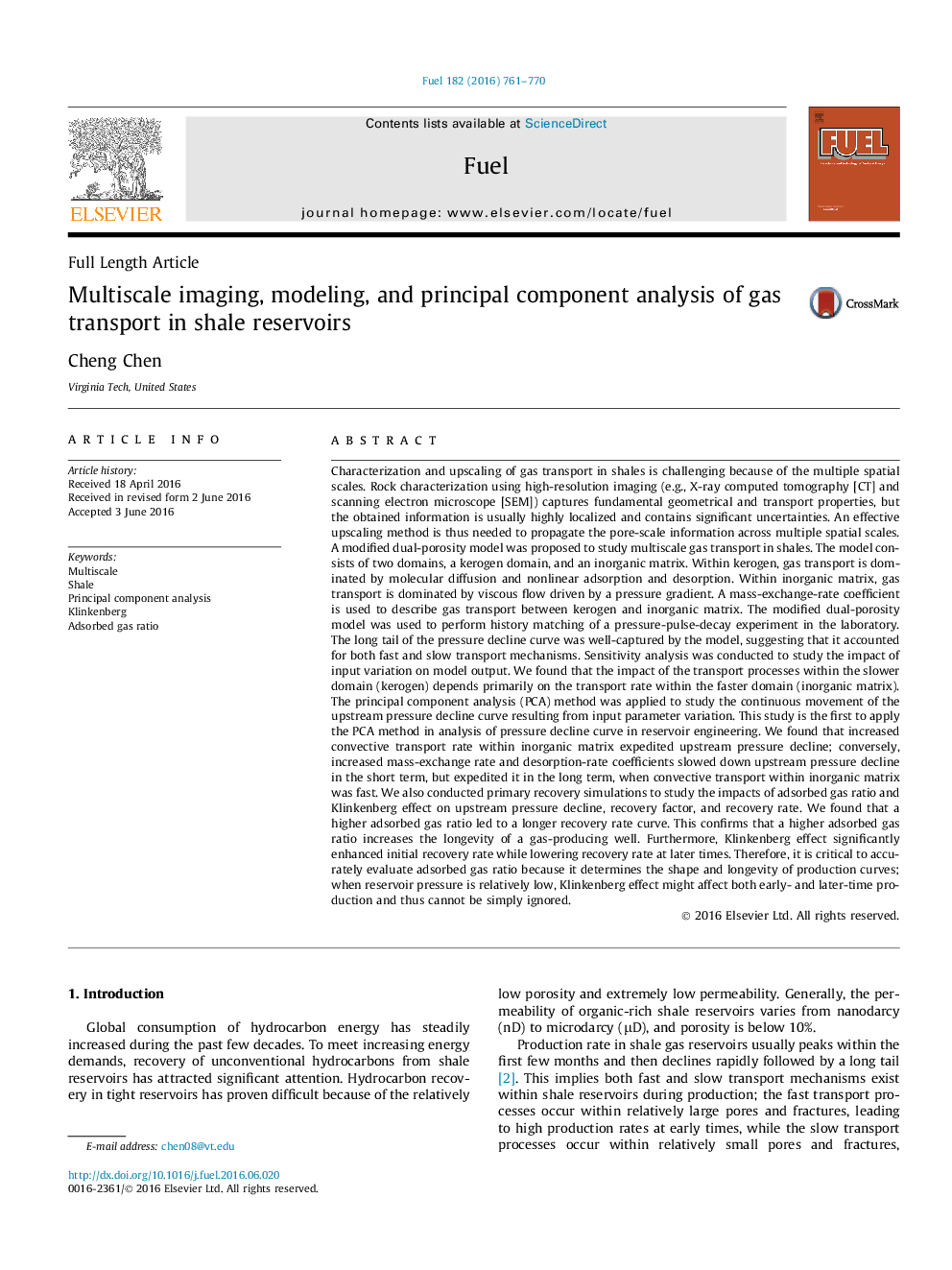| کد مقاله | کد نشریه | سال انتشار | مقاله انگلیسی | نسخه تمام متن |
|---|---|---|---|---|
| 6633567 | 461090 | 2016 | 10 صفحه PDF | دانلود رایگان |
عنوان انگلیسی مقاله ISI
Multiscale imaging, modeling, and principal component analysis of gas transport in shale reservoirs
ترجمه فارسی عنوان
تصویربرداری چند بعدی، مدلسازی و تحلیل مولفه اصلی انتقال گاز در مخازن شیل
دانلود مقاله + سفارش ترجمه
دانلود مقاله ISI انگلیسی
رایگان برای ایرانیان
کلمات کلیدی
چند منظوره، شیل، تجزیه و تحلیل مولفه اصلی، کلینکنبرگ، نسبت گاز جذب،
موضوعات مرتبط
مهندسی و علوم پایه
مهندسی شیمی
مهندسی شیمی (عمومی)
چکیده انگلیسی
Characterization and upscaling of gas transport in shales is challenging because of the multiple spatial scales. Rock characterization using high-resolution imaging (e.g., X-ray computed tomography [CT] and scanning electron microscope [SEM]) captures fundamental geometrical and transport properties, but the obtained information is usually highly localized and contains significant uncertainties. An effective upscaling method is thus needed to propagate the pore-scale information across multiple spatial scales. A modified dual-porosity model was proposed to study multiscale gas transport in shales. The model consists of two domains, a kerogen domain, and an inorganic matrix. Within kerogen, gas transport is dominated by molecular diffusion and nonlinear adsorption and desorption. Within inorganic matrix, gas transport is dominated by viscous flow driven by a pressure gradient. A mass-exchange-rate coefficient is used to describe gas transport between kerogen and inorganic matrix. The modified dual-porosity model was used to perform history matching of a pressure-pulse-decay experiment in the laboratory. The long tail of the pressure decline curve was well-captured by the model, suggesting that it accounted for both fast and slow transport mechanisms. Sensitivity analysis was conducted to study the impact of input variation on model output. We found that the impact of the transport processes within the slower domain (kerogen) depends primarily on the transport rate within the faster domain (inorganic matrix). The principal component analysis (PCA) method was applied to study the continuous movement of the upstream pressure decline curve resulting from input parameter variation. This study is the first to apply the PCA method in analysis of pressure decline curve in reservoir engineering. We found that increased convective transport rate within inorganic matrix expedited upstream pressure decline; conversely, increased mass-exchange rate and desorption-rate coefficients slowed down upstream pressure decline in the short term, but expedited it in the long term, when convective transport within inorganic matrix was fast. We also conducted primary recovery simulations to study the impacts of adsorbed gas ratio and Klinkenberg effect on upstream pressure decline, recovery factor, and recovery rate. We found that a higher adsorbed gas ratio led to a longer recovery rate curve. This confirms that a higher adsorbed gas ratio increases the longevity of a gas-producing well. Furthermore, Klinkenberg effect significantly enhanced initial recovery rate while lowering recovery rate at later times. Therefore, it is critical to accurately evaluate adsorbed gas ratio because it determines the shape and longevity of production curves; when reservoir pressure is relatively low, Klinkenberg effect might affect both early- and later-time production and thus cannot be simply ignored.
ناشر
Database: Elsevier - ScienceDirect (ساینس دایرکت)
Journal: Fuel - Volume 182, 15 October 2016, Pages 761-770
Journal: Fuel - Volume 182, 15 October 2016, Pages 761-770
نویسندگان
Cheng Chen,
